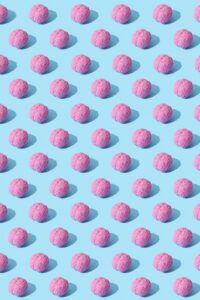Consumer-related motives can be divided into physiological and psychological. This distinction also shows the relationship between motives and needs. Physiological motives stimulate movements that are linked to the basic functions of the body. Psychological motives, on the other hand, stimulate emotional and mental movements. Perception is the acquisition of information about the existence of an event or object through the senses. Every person gives meaning to all stimuli in the environment. Consumers perceive information from their environment. However, everyone’s perception is different and personal experiences, beliefs and values influence perception.
Marketers take these factors into account to ensure that consumers perceive their product or brand in a positive way. By drawing inferences from previous shopping experiences, consumers engage in a learning process that influences their future purchasing decisions. These experiences shape consumers’ perceptions of a product or brand, and these perceptions enable marketers to ensure that they are consistently top of mind and strengthen customer loyalty. Moreover, consumers’ memory of the product or brand offers a strategic advantage to improve the effectiveness of marketing efforts, as a memorable brand can create a long-lasting bond between customers.
Especially in the past year, many different marketing and advertising strategies have been tried to better understand consumer psychology. In this process where social media was actively used, more brand collaborations were made with “public faces” on platforms such as Instagram and Tiktok in order for the consumer to experience a sense of belonging.
Brands need to carry out marketing activities in accordance with the profile of the brand’s purpose, especially when promoting the product. For example; if any product is to be promoted in Istanbul, that product must be suitable for historical places. “Maiden’s Tower” is important for the consumer, a lasting effect can be left in the consumer’s brain with a harmonious product match here. However, the suitability of the product, graphic design and many other details must be suitable for advertising. Especially here, the question “what does the brand want to tell?” is of great importance.
It is among the trends of this year that augmented reality-oriented advertisements, especially on street billboards, arouse excitement in the consumer. Again today, everything is about “experience”. Brands associate many of their activities with consumer experience. Consumers have an experience-oriented perspective. With experience, they can actually experience any product or content in their emotional world, which is changing due to the intense use of social media, and establish a bond with it.
Today, with neuromarketing technologies, it is possible to objectively present data on how the suitability of any product, advertisement, advertising content creates emotions in the consumer, the sense of excitement and arousal. With the developing technology in every field, the question marks are decreasing in the information age.
Reference:
Psychologist Merve Altındağ




